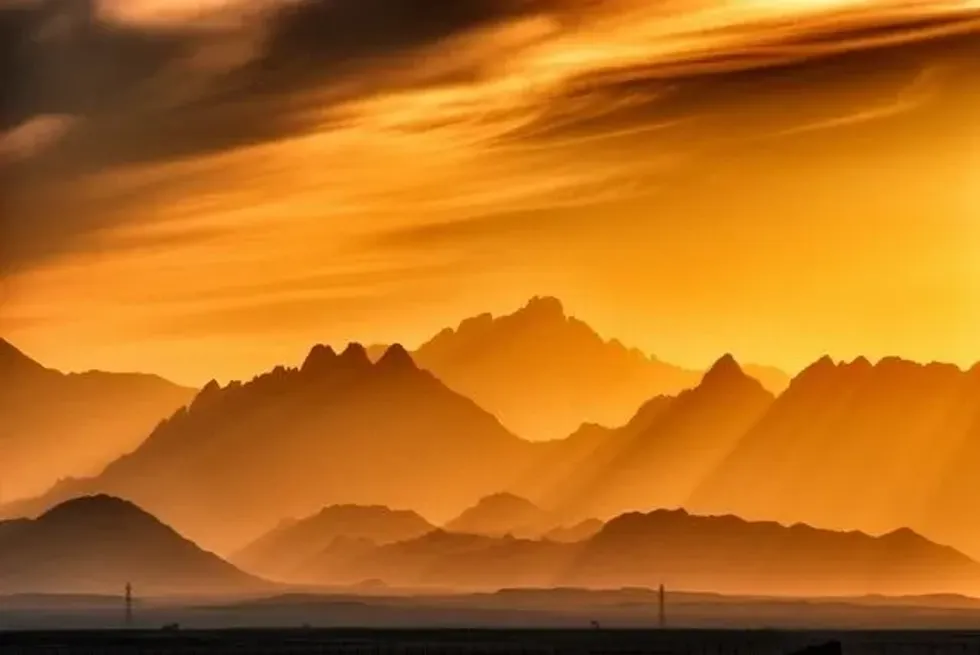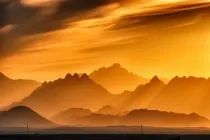Witnessing the bio-diversity of a tropical forest is genuinely thrilling.
Did you know that Mount Nimba is the most diverse site in Africa for both fauna and flora? The Mount Nimba Strict Nature Reserve provides many opportunities and fun activities to choose from in Guinea or the Ivory Coast!
It's home to various animals, including elephants, leopards, and gorillas. And the mountaintop is covered in unique plants that can't be found anywhere else on the continent! If you're looking for an unforgettable African adventure, make sure to add Mount Nimba to your list!
Discovery And History
The Mount Nimba Strict Nature Reserve is a World Heritage Site established in 1943. This was done by the government of Guinea. However, the nature reserve was not a World Heritage Site at the time.
There are a few peaks within the mountain range, all of which come within Guinea's share of Mount Nimba. The peaks are Mount Richard-Mollard, Grand Rochers, Mont Piérré Richaud, Mont LeClerc, Mont Tô, and Mont Sempéré.
Out of these, Mount Richard-Mollard is the highest peak. It stands at the height of around 5748 ft (1,752 m). The peak with the smallest elevation is 5174 ft (1577 m).
The mountain range formation is estimated to have taken place in the late Jurassic to late Eocene age, meaning that the peaks are very old. They have many natural resources which are valuable to humankind.
This is one of the reasons why Mount Nimba and its flora and fauna are endangered in the present day. However, we must note that several conservation efforts are underway, which are trying to ensure that this mountain range and its inhabiting animals do not face any serious danger.
Cultural Heritage
The cultural heritage of this mountain range owes to the fact that people of the surrounding areas have mainly benefited from the rich flora and fauna of Mount Nimba. Being ecologically diverse, many animals have their natural habitats in the area, which brings many tourists and scientists to Mount Nimba.
This is one of the reasons why the nation's economy has been booming.
The culture of the nations such as Liberia, Guinea, and the Ivory Coast have also been influenced by the fact that Mount Nimba provides top-notch quality of iron ore. Many informed citizens of these nations are tirelessly working towards ensuring that none of the endemic species are endangered by any industrial activities of the area.
Apart from this, since Mount Nimba spans across the borders of multiple nations and is located in a largely uninhabited area, there are no other such cultural influences specific to the mountain range.
The montane forests of the region are of primary importance since the flora and fauna that such areas can sustain are hard to find in any other place in the world. Once lost, these species of animals and plants will be gone forever, culturally impacting the people.
They have also been instilled with a sense of belonging and the need to save the mountain range from extreme activities.
The landscapes of this short mountain range are also very remarkable and provide one of the best scenic experiences in Guinea. Tourists often go to the nature reserve in Mount Nimba to indulge in its glory.
Being a UNESCO World Heritage Site, the Mount Nimba Strict Nature Reserve prohibits poaching and hunting, which is one of the main threats that the region's animals have been facing. Unchecked activities could lead to such species being lost forever, which is something that should be worked against.
The habitats of such animals are also under a lot of threat, which is why people need to be proactive in making sure that Mount Nimba and its residents are protected.
The fact that there is insufficient funding available for the protection of Mount Nimba and its natural resources is something that the communities in Guinea, Liberia, and Ivory Coast must work together to solve.
Site Statistics
Mount Nimba is a long mountain range. It spans over a length of around 25 mi (40 km) and appears like a rope lying on the land surface. This is due to the low height of the mountain range.
Even the highest peak of Mount Nimba is not nearly as high as what we would expect from the larger mountain peaks of the world. Mount Richard-Mollard is the highest peak and reaches a height of a mere 5748 ft (1,752 m). All the other peaks also have similar heights.
The second highest peak is Grand Rochers, and its height is 5558 ft (1694 m). There is not much significant difference between Mount Richard-Mollard and Grand Rochers in elevation. The next peak in terms of elevation is Mont Sempéré, whose elevation is 5518 ft (1682 m).
Mont Piérré Richaud stands at 5479 ft (1670 m) and is nearly the same height as Mont Sempéré. Mont Tô rises 5495 ft (1675 m) over the sea level and slightly at a lower height is Mont LeClerc, which has an elevation of 5174 ft (1577 m).
Mont LeClerc is the smallest peak in this mountain range; however, it lacks nothing in terms of flora and fauna.
All of these peaks fall within Guinea's side of the mountain range, so most people tend to head to Guinea when they want to experience what Mount Nimba offers. Apart from this, many endemic species such as the viviparous toad live in this mountain range.
These toads can give birth to young ones instead of laying eggs since the species is supplied with the correct conditions at Mount Nimba. There are many such endemic species at Mount Nimba, which must be protected.
FAQs
Q: How high is Mount Nimba?
A: Mount Nimba is a long mountain range that houses many animal species. Spread over Guinea and Ivory Coast, the highest peak of Mount Nimba stands at 5748 ft (1,752 m). This peak is named Mount Richard-Mollard.
Q: Where is Mount Nimba?
A: Mount Nimba is a mountain range that doesn't remain within the borders of a single nation. It spans across the boundaries of Liberia, Guinea, and the Ivory Coast.
Q: How long is Mount Nimba?
A: The length of the Mount Nimba range is around 25 mi (40 km). This mountain range is quite long. At the same time, the low elevation of the mountain range also makes it look like a giant piece of rope!
Q: Why is Mount Nimba Strict Nature Reserve in danger?
A: In addition to being home to many endemic species of animals, Mount Nimba is also a rich reserve of iron ore. This is one of the reasons why this mountain range has recently been able to attract attention from industrial giants.
Since the protection laws are not nearly as strong as they should be, large areas are being mined.
The parts of Mount Nimba that come within Guinea have been excised and hence have had extreme mining activities in recent years. At the same time, the mountain range and its habitats have been threatened by the encroachment of agriculture.
Q: Why is Mount Nimba important?
A: Mount Nimba is important for its many habitats and the bio-diversity that it houses. This mountain range is home to many endemic species of the world. In addition to this, the mountain range is also regarded as an essential water catchment. It has many waterfalls and rivers, as well as protected areas.
Q: When was Mount Nimba Strict Nature Reserve listed in UNESCO heritage?
A: The part of Mount Nimba that comes within Guinea was declared a biosphere reserve in 1980. The Mount Nimba Strict Nature Reserve was declared a World Heritage Site in 1981 in Guinea, and the Ivory Coast made its declaration in 1982.
Q: Why Mount Nimba Strict Nature Reserve is so famous?
A: This World Heritage site is known far and wide because of the many animals and birds that find their natural habitats in this mountain range. In addition to this, Mount Nimba also has many valuable natural resources.









